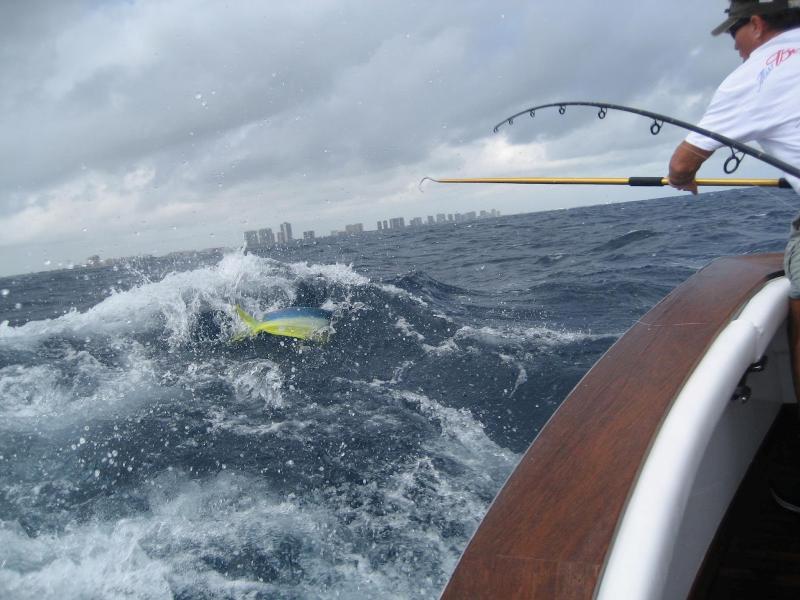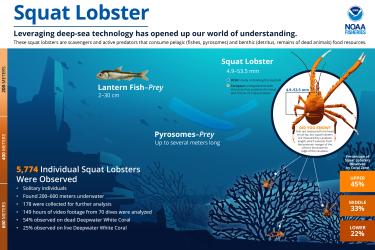Our celebration of National Seafood Month would not be complete without highlighting a special source of seafood: the fish we catch ourselves! In 2019, recreational and non-commercial saltwater anglers took 187 million fishing trips and caught 950 million fish. Catch-and-release angling plays an important role in U.S. fish conservation—more than half the fish caught are released. But there are plenty of opportunities around the nation for anglers to keep the fish they hook. Plus, a dinner featuring seafood you caught yourself adds a delicious capstone to an exciting day on the water.
Live close enough to the coast to head out this weekend? Find yourself daydreaming about future fishing excursions? If you’re angling for a meal, it’s important to have a plan for processing, transporting, and either freezing your fish or savoring it fresh. To help, we’ve compiled a few suggested preparations for popular catches from each region. Use these to incorporate your bounty into your weeknight menu or to serve a special meal to family and friends.
Alaska: Fishing for the Halibut
Pacific halibut are perhaps Alaska’s iconic saltwater sportfish. The largest species of flatfish, they can grow to more than 8 feet long and 5 feet wide! Anglers venturing to Alaska’s waters from around the country may dream of landing a gigantic trophy, but more modestly-sized halibut are prized for their taste. Halibut fillets are very mild and sweet, with a large flake, rewarding successful anglers with a delicious and versatile dinner option.
You can pan-sear halibut steaks with pepper and finish them in the oven with cherry tomatoes and basil. This quick and easy way to prepare your halibut steaks is similar to preparing classic beef steaks. For a fancier, flavor-packed dish, try gently poaching halibut steaks in coconut milk and spices and serving with mango salsa.
- Pan-Seared Alaska Halibut Steaks with Cherry Tomatoes and Basil
- Coconut-Poached Alaska Halibut with Mango Avocado Salsa
NOAA Fisheries works with the State of Alaska, the North Pacific Fishery Management Council, and the International Pacific Halibut Commission to ensure that halibut are sustainably managed and allocated between commercial and recreational fisheries. Learn more about sport halibut fishing in Alaska.
West Coast: Rockin’ Some Rockfish
In coastal waters from Washington to California, the most common recreational catches are rockfish. In 2017, vermilion rockfish topped the list of saltwater angler catches in California, while black rockfish dominated in Oregon and Washington. Rockfish are sometimes underappreciated as seafood, but all species are good to eat! While there are variations in taste among species, they are generally mild and slightly sweet. And when you catch them yourself, they are as fresh as can be!
For a simple one-dish meal, you can bake your rockfish fillets on a bed of hardy greens, topping them with tomatoes, seasoning, and lemon rounds. For a more adventurous take, coat rockfish fillets in dukkah, an Egyptian spice mix that you can purchase or recreate at home with a spice grinder. Then sauté and serve with eggplant, tomatoes, and chickpeas.
Careful conservation has helped many rockfish stocks recover from past overfishing, but others are still rebuilding. This can be tricky for anglers because a number of species are commonly found together and often look similar. If you’re fishing for rockfish to eat, check out these tips for telling rockfish species apart and read about best practices for releasing less-abundant species back to depth. Learn more about recreational fishing for rockfish and other groundfish species on the West Coast.
Pacific Islands: Tuning into Tuna
In the Pacific Islands, saltwater recreational and non-commercial angling is closely tied to seafood. That may mean shore-based fishing for reef fish to feed the family, or offshore, high-adventure trips chasing famously tasty sportfish. One highly sought open-ocean target is yellowfin tuna, one of two tunas (with bigeye) that are also known as ahi. Yellowfin tuna flesh is mild and meaty, firm when cooked, and great for grilling. Of course, fresh-caught tuna is also an ideal fish to enjoy raw.
Marinating tuna steaks in advance allows the fish to pack even more flavor. Marinate in sesame oil, soy sauce, and lemon juice for half an hour before grilling for a taste inspired by Asian cuisine. (Watch the time though—too long and the lemon juice will start to cook the fish.) Or swap the lemon juice in the marinade out for brown sugar, rice wine vinegar, fish sauce, and ginger, stepping up the flavor mixture for ahi poke. Serve in bowls with rice, veggies, and other garnishes for a modern take on a traditional Hawaiian preparation of raw fish.
Pacific yellowfin tuna are abundant, fast-growing, and well-managed, making them a sustainable seafood option. NOAA Fisheries works with the Western Pacific Fishery Management Council to manage tuna fisheries domestically in the Pacific Islands and to implement international tuna agreements. There are no federal regulations for recreational tuna fishing in the islands; rather, anglers should follow the local state or territorial guidelines. Learn more about recreational fishing in the Pacific Islands.
Gulf of Mexico: Snacking on Snappers
For recreational fisheries in the Gulf of Mexico, charismatic red snapper tends to steal the spotlight. But other snapper species are just as tasty, and several have year-round open seasons. For example, mangrove snapper, also called gray snapper, was the most common snapper species caught recreationally in the Gulf in 2017. Vermilion snapper is also plentiful and tasty. Generally, snappers are mild and sweet, with medium firmness and flake.
For a simple dinner preparation, lightly sauté your snapper fillets and serve with a tropical fruit salsa that can be made and chilled ahead of time. Or dress up your dinner menu by encrusting the fillets with chopped almonds before sauteing and serving with a decadent cream sauce.
NOAA Fisheries works with the Gulf of Mexico Fishery Management Council and the five Gulf States to responsibly manage commercial and recreational fisheries in the Gulf. Several snapper species are subject to minimum size limits, and all are subject to individual and/or aggregate bag limits. In 2022, recreational anglers will be required to carry a venting tool or descending device to help return released reef fish to depth more safely. Learn more about current regulations for recreational angling in federal waters in the Gulf of Mexico.
Southeast and Caribbean: Fishing for “Dolphin”
Saltwater anglers in the southeastern United States and Caribbean know that “fishing for dolphin” means targeting the sleek, beautifully green-and-blue, and conspicuously square-headed dolphinfish. Their landlubber friends, however, are more likely to recognize this popular food fish under its Hawaiian name, mahi mahi, or perhaps its Spanish name, dorado. Once any confusion has cleared, everyone will enjoy this fish’s mild taste and large, moist flake. Good news for anglers: unlike many fish, mahi mahi are equally delicious at any size.
Steaming your mahi mahi fillets over orange slices and star anise pods is an easy and quick way to enhance your dinner with exciting flavors perfect for autumn. If you have more time, prepare a glaze that evokes the islands with pineapple, ginger, and rum. Brush the mahi mahi fillets with the glaze, broil, and serve with the remaining glaze as sauce.
- Steamed Mahi Mahi with Orange, Star Anise, and Butternut Squash Sauce
- Broiled Mahi Mahi with Tropical Glaze
Mahi mahi grow quickly, mature quickly, and reproduce prolifically, making them an ideal species for sustainable harvest. In the Atlantic, NOAA Fisheries works with the South Atlantic Fishery Management Council to set commercial and recreational catch limits. Note that in certain areas mahi mahi are subject to a minimum size limit. Learn more about recreational saltwater angling in the Southeast.
New England and the Mid-Atlantic: Help Yourself to Some Haddock
While the offshore, federal waters of New England and the northeastern United States are famous for their commercial fisheries, they support robust recreational fishing opportunities as well. Haddock are a popular offshore target that are available to saltwater anglers year-round from Maine to New Jersey. Though smaller than their once-ubiquitous cousins, Atlantic cod, haddock have a chance to shine as a healthy and versatile seafood option. Their meat is firmer than that of cod, with a small, delicate flake, so fillets generally hold together better with the skin left on.
Feature your haddock fillets in a fresh-from-the-boat version of any recipe that calls for white fish. If you have picky eaters at home, there are plenty of fun family-friendly options. You can cook seasoned haddock fillets quickly in tomato sauce and serve over rigatoni pasta. Or turn them into homemade fish sticks and enjoy with tartar sauce.
Haddock are plentiful and responsibly harvested in the United States, making them a sustainable seafood option. However, haddock are frequently caught near Atlantic cod, which are at historically low levels and subject to strict conservation measures. The two species also resemble one another. Check out this video for tips and resources for catching haddock while avoiding or safely releasing cod. Learn more about saltwater recreational angling in the Greater Atlantic Region.
Catch and Eat Seafood, America!
Cooking seafood you catch yourself strengthens your connection to the ocean and our marine natural resources. And money you spend on recreational fishing trips supports fishing guides, suppliers, charter vessels, and our unique coastal communities. As long as you follow the appropriate regulations, you can know that you are participating directly in the economically and environmentally sustainable harvest of our fisheries.
NOAA Fisheries also arms you with the facts about what makes U.S. seafood sustainable—from the ocean or farm to your plate. Get up-to-date information on the status of recreationally harvested marine fish, and learn more about U.S. seafood







